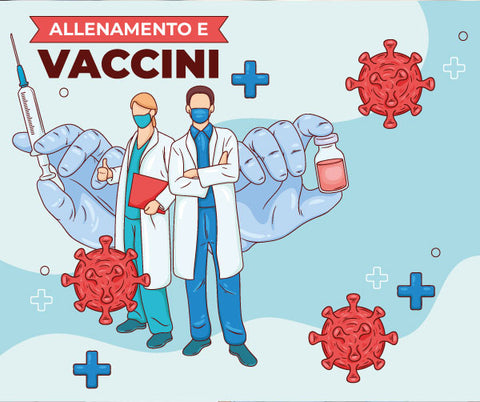Cadmium and lead levels in the blood may be associated with depression, anxiety, or osteoporosis. How to treat Cadmium and Lead accumulation in the blood
Heavy metals are pollutants often found in the air as a result of various types of industrial activity.
Even when their concentration in the atmosphere is low, they can accumulate in the soil and enter the food chain (both via land and water).
Exposure to heavy metals is associated with multiple health effects, with varying degrees of severity and conditions: kidney and bone problems, neurobehavioral and developmental disorders, elevated blood pressure, and potentially even lung cancer.
Lead is a non-essential metal and is also classified as a Group I human carcinogen by the International Agency for Research on Cancer.
Exposure to Pb induces neurological and hematological dysfunction, renal and hepatic damage and reproductive disorders in humans.

Lead, Cadmium and Depression
A systematic literature search was conducted to identify observational studies evaluating the impact of cadmium and lead on the incidence and phenotype of depression and anxiety.
The search identified 1059 records.
A total of eighteen studies were included, comprising 28,304 participants with a female predominance (n = 19,483; 69%).
Cadmium and lead levels were analyzed in eight and thirteen studies, respectively.
Five studies found an association between blood cadmium levels and depression, including three studies that reported that individuals in the highest quartile of blood cadmium were more likely to show depressive symptoms.
None of the studies found an association between anxiety levels and blood cadmium levels.
Nine studies have shown an association between depressive symptoms and blood lead concentrations . Elevated lead levels may be associated with anxiety and neurobehavioral deficits.
There are many factors that influence both cadmium and lead levels and the severity of depression and anxiety in respondents.
There is no clear evidence of the impact of cadmium and lead levels on the development of depressive symptoms, but much indirect evidence points to it.
Cadmium and Osteoporosis
Cadmium (Cd) is a toxic heavy metal that is widespread in the environment and leads to human exposure primarily through diet (when smoking is excluded), as documented by recent human biomonitoring (HBM) investigations.
Exposure to Cd at low environmental levels of exposure has been associated with adverse effects such as renal toxicity and more recently bone effects.
The implication, although limited, of Cd in the etiology of osteoporosis may be of great importance at the population level given the significant prevalence of osteoporosis and the ubiquitous and lifelong exposure to Cd.
Therefore, cases of osteoporosis attributable to Cd exposure were estimated in three European countries (Belgium, France and Spain), based on urinary Cd levels measured by HBM studies conducted in these countries.
The target population consisted of women aged 55 years and older, for whom risk levels associated with environmental exposure to Cd were available.
The results support the importance of reducing the general population's exposure to Cd.
The content of cadmium and lead in some medicinal plants
54 samples belonging to 23 herbal species (15 individuals and 8 mixtures) were analyzed for their heavy metal content in the raw materials and in their water infusions.
Trace and toxic elements in these samples were determined using inductively coupled plasma atomic emission spectrometry (ICP-OES) after acid digestion.
Recently, the use of herbal medicines has increased significantly mainly due to the common belief that herbal remedies are of natural origin and therefore inherently safe and without adverse health effects compared to synthetic medicines.
In fact, this belief is unfounded; poisonings associated with the presence of toxic heavy metals in medicinal plants and foods have been reported regularly.
It is therefore important to use foods or medicinal plants where multi-residue and mycotoxin tests are performed on each production batch.
Other aspects may encourage the use of herbal remedies such as the availability of herbal medicines without a prescription, their reasonably low prices, and the failure of synthetic drugs to cure some human diseases.
The growing popularity of herbal products as medicines has led to concerns about their quality and safety for human consumption.
These products may be contaminated with microbial contaminants, chlorinated pesticides, heavy metals and other chemical toxins.
The main sources of metal contamination in herbal products are agricultural activities, mining and smelting industries, precipitation, water and air pollution, soil contamination and the use of fossil fuels for heating.
Lead and cadmium are toxic elements to humans; they play no beneficial biological roles and can be very dangerous even at low concentrations.
The highest mean lead concentration in individual herbs was detected in thyme (19.3 mg/kg) followed by olibanum (17.7 mg/kg), roselle (17.4 mg/kg) and peppermint (16.2 mg/kg) .
Among the herbal blends, the Chinese herbal blend for weight loss was found to contain a high average concentration of lead (28.7 mg/kg).

Natural Medicine in the Treatment of Cadmium Bioaccumulation
Environmental contamination by cadmium is a matter of serious international concern.
Bioaccumulation of cadmium occurs mainly through ingestion of contaminated water and food.
It may also cause damage to the liver, kidneys, lungs and other organs.
Therefore, treatment of cadmium poisoning has become a critical point of research.
Researchers are trying their best to explore prophylactic and therapeutic drugs for the prevention and treatment of cadmium-induced poisoning.
So far, chelation therapy, the conventional treatment for heavy metal toxicity, appears to have a number of safety and efficacy problems.
In natural medicines, when using tested substances, and therefore free from contaminants, they can have important advantages, high safety, less adverse reactions, and therefore have great potential in the treatment of cadmium poisoning.
Buy NowZinc
Zinc is one of the most studied essential metals for alleviating heavy metal toxicity.
Because zinc has similar chemical and physical properties to cadmium and lead, it competes for binding sites on absorbent proteins (metals and enzymes).
Zinc intake also induces the synthesis of metallothionein (MT), a low molecular weight protein that has a high affinity for cadmium and causes detoxification by binding it.
Zinc supplementation effectively protects the activity of δ-aminolevulinic acid dehydratase (ALAD), a zinc-dependent enzyme that is very sensitive to lead toxicity.
Additionally, zinc supplementation has been reported to alleviate oxidative stress caused by exposure to cadmium and lead, which may be due to zinc's role as a cofactor for the antioxidant enzyme copper/zinc superoxide dismutase (Cu/Zn SOD).
Selenium
A considerable number of studies have demonstrated that selenium supplementation is protective against cadmium and lead toxicity in a range of different organs of mice, including the brain, lung, liver, kidney, and blood.
Selenium is a cofactor of the antioxidant enzyme glutathione peroxidase (GPx) and contributes to the antioxidant defense system, which helps alleviate cadmium and lead toxicity by reducing induced oxidative stress and improving host antioxidant capacity.
It is also believed that selenium can form inactive complexes with heavy metals that can further enhance detoxification from them.
Buy NowB vitamins
Vitamin B 1 and B 6 deficiencies have been reported to aggravate susceptibility to Cadmium and Lead toxicity. Vitamin supplementation has been shown to be effective against Cadmium and Lead toxicity in both human and animal studies.
Dietary supplementation of vitamin B 1 reduces lead levels in the liver, kidneys, bones and blood and restores ALAD activity in the blood.
Vitamin B 1 influences the absorption of Lead and its pyrimidine ring mediates its interaction, which may cause increased excretion of Lead and decreased its toxicity.
Vitamin B 6 has also been shown to be effective in reducing lead accumulation in tissues and reducing the inhibition of ALAD activity.
This function is likely attributed to the nitrogen atom in its ring structure, which can chelate Lead before it is absorbed.
Protective Role of Magnesium against Cadmium Toxicity
One of the important mechanisms of cadmium (Cd) toxicity is its interaction with bioelements, including magnesium (Mg).
Exposure to Cd leads to disturbances of Mg metabolism in the body, while Mg supplementation has a negative effect on Cd absorption, accumulation and toxicity.
The available results indicate a protective role of Magnesium against Cadmium toxicity.
Buy Now >Probiotics
Probiotics are defined as “live microorganisms which, when administered in adequate amounts, confer a health benefit on the host” (WHO 2001).
The benefits of probiotics are related to diarrhea, allergy, lactose intolerance, cholesterol reduction, immune system development and protection against intestinal pathogens.
Some species of bacterial strains such as Lactobacillus rhamnosus , L. plantarum and Bifidobacterium longum are able to bind heavy metals in vitro.
Additionally, they are known to have antioxidant properties in humans and may be another important feature in protecting against heavy metal toxicity.
In particular, two strains of lactobacilli show protective effects in mice against cadmium and lead toxicity. L. plantarum , a probiotic with good cadmium binding capacity, is able to protect mice from acute and chronic toxicity through its intestinal sequestration and antioxidant effects.
Oral administration of this strain effectively reduced intestinal cadmium absorption, reduced tissue accumulation, decreased tissue oxidative stress, reversed liver and kidney damage, and improved corresponding histopathological changes in cadmium-exposed mice.
Lactobacillus plantarum protects against lead toxicity by restoring the enzymatic activity of ALAD (aminolevulinic acid dehydratase) in the blood, the main indicator of lead exposure, decreasing Pb levels in the blood and tissues and preventing Pb-induced oxidative stress.
Numerous studies have confirmed that other probiotics may also be protective against heavy metal toxicity.
A mixture of L. rhamnosus , L. acidophilus and B. longum significantly reduced Cadmium-induced genotoxicity, both in vitro and in vivo. The use of these probiotic lactobacilli can be considered a new dietary therapeutic strategy against heavy metal toxicity.
Sources:
-
Volume 2017 | Article ID
6971916 | https://doi.org/10.1155/2017/6971916 - Nutrients. 2015 Jan; 7(1): 552–571.doi: 10.3390/nu7010552



